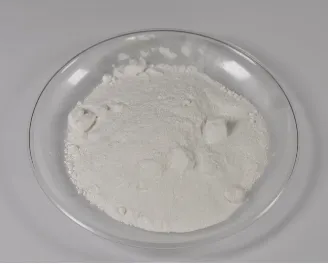The Growing Popularity of Mica Pigments in Natural and Organic Cosmetics
In recent years, the beauty and skincare industries have witnessed a shift towards more natural and organic products. Consumers are becoming increasingly conscious of the ingredients in their cosmetics and their impact on both personal health and the environment. Among these ingredients, mica pigments have gained significant traction, particularly in natural and organic cosmetics. Known for their shimmering, reflective properties, mica pigments are now a staple in many beauty formulations. This article explores the reasons behind their rising popularity and how they are contributing to the evolution of modern, eco-conscious cosmetics.

Understanding Mica Pigments and Their Appeal
Mica is a naturally occurring mineral that, when ground into a fine powder, can be used as a pigment. These pigments are prized for their unique ability to reflect light, which gives makeup products a luminous, iridescent quality. Mica pigment powder come in a wide variety of colors and finishes, including pearlescent, metallic, and matte, making them highly versatile for use in cosmetics.
The growing demand for mica in beauty products stems from its ability to create stunning visual effects. The delicate shimmer it imparts makes it especially popular in products such as eyeshadows, highlighters, blushes, and lip glosses. Beyond aesthetics, mica is lightweight, long-lasting, and non-comedogenic, meaning it won’t clog pores, which is crucial for those with sensitive skin.
The Rise of Natural and Organic Beauty Products About Mica Pigments
The popularity of mica pearl pigment in cosmetics is closely tied to the broader trend of consumers seeking cleaner, safer, and more sustainable beauty products. Over the past decade, the demand for natural and organic cosmetics has grown exponentially. This shift is driven by growing concerns about synthetic chemicals, the potential toxicity of artificial additives, and the environmental impact of conventional beauty products.
As a naturally sourced mineral, mica fits perfectly into this trend, making it an appealing ingredient for companies focused on creating environmentally friendly, non-toxic, and cruelty-free beauty lines. Consumers are increasingly aware of the ingredients they apply to their skin, pushing cosmetic brands to embrace safer, more natural alternatives like mica pigments.
The Role of Mica Pigments in Natural and Organic Cosmetics
One of the key factors driving the adoption of mica pigments in natural and organic cosmetics is their ability to add color and texture without relying on synthetic dyes and pigments. Many synthetic colorants are derived from petrochemicals or contain harmful substances such as parabens, phthalates, and artificial fragrances, which can be irritating to the skin or harmful in the long term. Mica, on the other hand, is a mineral that is naturally abundant and free from such synthetic chemicals.
For organic beauty brands, mica’s inclusion in formulations allows for the creation of vibrant, radiant makeup products that align with their mission of using safe, ethically sourced ingredients. Mica is often used in combination with other natural minerals such as zinc oxide or titanium dioxide, which offer sun protection and additional skin benefits. This combination not only enhances the quality of the product but also increases its appeal to the growing number of consumers who prioritize skin-friendly ingredients.
Sustainability Concerns and Ethical Sourcing of Mica Pigments
Despite its many advantages, the mica industry has faced scrutiny due to concerns about unethical mining practices. In regions such as India, where much of the world’s mica is sourced, child labor and unsafe working conditions have been reported. This has led to calls for greater transparency and ethical sourcing within the beauty industry.
In response to these concerns, many cosmetic companies have taken steps to ensure that their mica is sourced responsibly. Several brands now work exclusively with certified mica suppliers who adhere to fair labor practices and environmental standards. Furthermore, some companies have even started using synthetic mica, which is produced in a lab and does not involve mining. While synthetic mica offers a more controlled and ethical alternative, natural mica remains a popular choice due to its unique qualities.
Consumer Awareness and Market Trends About Mica Pigments
The growing popularity of mica pigments in natural and organic cosmetics is also a reflection of shifting consumer preferences. Consumers today are more informed and conscientious about the products they purchase. They are looking for beauty products that not only meet their aesthetic needs but also align with their values, such as sustainability, cruelty-free practices, and transparency in ingredient sourcing.
The increasing interest in natural mica-based products has led to a broader range of offerings in the market. Consumers can now find mica-infused products in various categories, from skincare to makeup, haircare, and body care. Whether it’s a shimmering highlighter, a radiant foundation, or a sparkly body lotion, mica pigments help enhance the product’s visual appeal while also meeting consumer demand for more natural formulations.
The Future of Mica Pigments in Natural Cosmetics
Looking ahead, it’s clear that mica pigments will continue to play a significant role in the future of natural and organic cosmetics. As the demand for eco-conscious beauty products grows, brands are increasingly investing in innovative mica formulations. We can expect to see more options for ethically sourced mica, as well as new advancements in synthetic mica production to reduce environmental and social impacts.
-
Transforming Surfaces with Mica-Enhanced Paints in Coatings and DecorationNewsJul.02,2025
-
The Ultimate Guide to Mica-Based Luminous Colors with Pearlescent PigmentNewsJul.02,2025
-
The Critical Role of Mica in Industrial Applications in Welding and Oil FieldsNewsJul.02,2025
-
Revolutionizing Automotive Aesthetics with Modified Plastics Pearlescent PigmentsNewsJul.02,2025
-
The Secret with Mica Powder for Cosmetics Behind Radiant, Natural MakeupNewsJul.02,2025
-
Enhancing Performance in Polymer Applications with Mica Powder for RubberNewsJul.02,2025
Products categories









